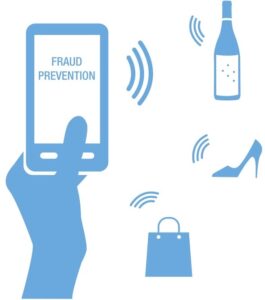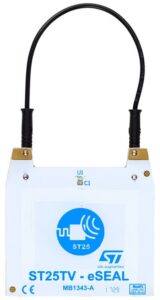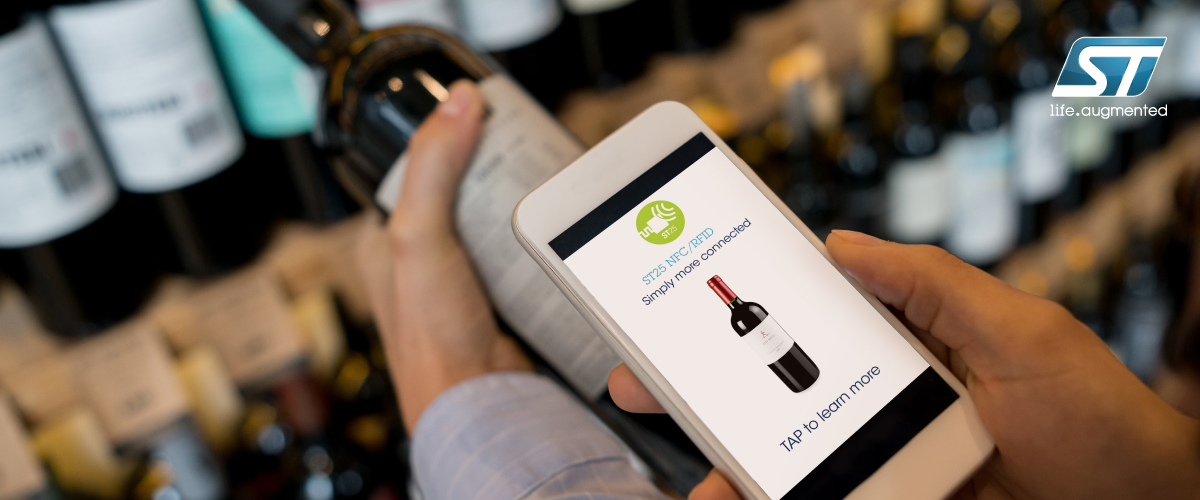The following is based on a true story.
In the board room of a medium-size wine company, the jovial executive committee celebrates the publication of their annual sales report, but the mood of their presidents is more cautious than they let it show. The numbers are good, but margins are shrinking, the competition is ever more aggressive, counterfeits are becoming a problem, and their consumers are having a harder time differentiating their products from the myriad of other wines flooding the market. The teams are proud of the bottles they are putting out, customer satisfaction is high, but the executive is painfully aware of the necessity to rise above the noise to increase its market penetration, and more smartly advertise the quality of their product.
At their next meeting, the CTO explains that NFC (Near Field Communication) is just starting to penetrate luxury products and that a tiny number of distillers are experimenting with it. The executive committee, therefore, tasks their brand and product managers to look into NFC to see if and how it can improve their operations as well as reach a younger demographic while also benefiting their existing clients. Even if the following is based on a true story, this blog post takes a considerable narrative license as it follows the journey of this wine company.
From the Board Room to Type-5 NFC Tags
The managers rapidly understand that NFC is the technology that helps them pay with their smartphones, but that it is also present in many more products, from clothing and cosmetics to the cars of today and tomorrow. Very simply, consumer products integrate a tag that contains information, such as a link to a website or a serial number, among others, and shops or end users can use their phones or other machines as a reader to extract the tag’s data thanks to a phenomenon called inductive coupling. When a small electrical current passes through the reader’s loop antenna, it generates a magnetic field that can flow onto the tag’s antenna, as long as it is close enough. This field induces an electrical current within the tag, thus powering it to enable it to send information to the reader.
After grasping the basics of this technology, the product and brand managers quickly discover that the latest NFC tags on the market use the Type-5 specification. Type-5 tags are compatible with the ISO/IEC 15693 standard, which enables them to have a longer read distance or smaller antennas. It is thus perfect for wine bottles as the tag and its coil must remain hidden. Disfiguring a bottle with a large loop is a cardinal sin. And as the managers Google “NFC Type-5,” the first video appearing in the search engine is the ST film above explaining the technology while showing a tag behind the label of a bottle of wine. The investigative team understands that it is on the right track and immediately runs to their Tech department to see what they can do next.
From Type-5 NFC Tags to the ST25TV

The Tech division of this wine company is brilliant. It manages a responsive website, an influential social media platform, an engaging blog, but it has no experience with NFC and hardware design. It’s a common problem as Near Field Communication continues to transform products that have no electronics on them, thus demanding that their creators explore avenues foreign to their traditional operations. It’s at this crucial moment that someone recalls that a label maker for wine bottles is working with ST to integrate NFC tags, which means that the company can realistically join their efforts instead of starting from scratch and spending an inordinate amount of time and money on research and development. NFC’s recent increase in popularity is due in part to ST’s work with supply chains and their existing machines, leading to the integration of tags onto all sorts of consumer products.
After contacting the label maker working with ST, the managers learn about the ST25TV, ST’s Type-5 tag for non-electronic products, and get a much better understanding of what the technology can do for them. For instance, this series of tags can offer from 512 bits to 64 Kb of memory. With enough capacity, the tag can work as an inventory tracking system to optimize quality control, while also offering an interactive user experience. The final user can rely on a smartphone to read the tag and get more information about the bottle and its region, grapes, flavor profiles, as well as pairing advice. The company can also better reward loyal clients with promotions or relevant messages and get better feedback. With NFC, companies that had minimal access to their customers can now start a meaningful conversation.
From the ST25TV to a Better Product

And as the managers talk with their label maker and ST, they start to understand that the ST52TV has essential features that help the tag stand out from the rest of the competition. For instance, it has an anti-tampering system, which very few in the industry are capable of offering. The ST25TV includes a tamper loop that rips if someone removes the bottle’s top protective sleeve. Adulterating wine is the most common wine fraud and the tamper protection system of the ST Tag can guarantee customers that no one violated the bottle’s integrity as it traveled from the winery to their table. Additionally, the presence of an NFC Tag can thwart counterfeits that will most likely be NFC-free. The ST25TV also includes an anti-cloning system with a unique digital signature to ensure a reader can detect a duplicate tag so manufacturers can address the situation early.
The Tech department also became ecstatic when the label maker pointed them to the ST25TV-eSEAL , a ready-to-use demonstration board that enables them to show the features of the ST25TV to their superiors . For less than US$10, managers can use the ST25TV-eSEAL along with an Android smartphone to show firsthand how tamper detection works when the loop breaks. ST also offers application executables for Android and iOS to help developers experiment with the possibilities that this technology provides as they think about the mobile applications they will write to take advantage of the ST25TV. After a presentation by the managers to the board, the various executives smile with a lot less anxiety and a lot more optimism as they understand that the ST25TV can help them with their customers’ relation management, brand recognition, and inventory tracking.
What’s the Next Step?
- Learn more about the ST25TV
- Check out the ST25TV-eSEAL
